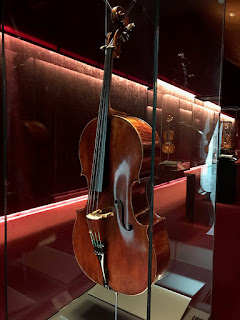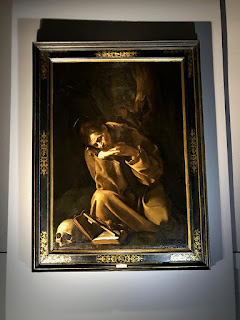Click on any image to enlarge
The Duomo of Cremona faces the town square (Piazza della Comune).
Construction of the Duomo was begun in 1107.
Construction of the Duomo was begun in 1107.
Facing the same Piazza are the bell tower, baptistry, and town hall. The bell tower is joined with the cathedral through a loggia, and was erected between 1267 and 1305. The astronomical clock was built 1583-1588 and depicts the vault of heaven with the zodiacal constellations.
Construction on the baptistery was begun in 1167.
The Town Hall was founded in 1206 and enlarged in 1245, with some modifications in later centuries.
A bronze statue is a tribute to Antonio Stradivari in Piazza Stradivari
The entrance to the Museo del Violino
Antonio Stradivari cello "Stauffer - ex Cristiani" 1700
Here is a recording of this cello from the Museo del Violino. Click HERE.
Stradivari guitar "Sabionari" 1679
This guitar and the following 1566 Amati violin are featured in a performance recording from the Museo. Click HERE to view.
Andrea Amati (ca. 1505-1577) violin "Carlos IX" ca. 1566.
Notice the remarkable one-piece back. It's rare that a maker can find a single piece to serve as the back. Most are made by joining two pieces. There are many examples of one-piece back violins in the collection
Giuseppe Guarneri "del Gesù" (1698-1744) violin "Stauffer" 1734:
Violin by Stradivari "Hellier" (1679) with elaborate purfling inlay:
I took a break at noon to hear a recital in the beautiful auditorium at the Museo. Lena Yokoyama performed solo on the Stradivari "Clisbee" 1669 violin. The instrument had been placed on a cloth-covered table for her. She did not walk in or out with the violin. At the conclusion of the recital, she placed the fiddle back on the table as the armed guard quickly moved into place at the table. A museum official entered soon after to remove the violin in a case.
After visiting this astonishing collection of instruments at the Museo del Violino, there was one more thing to see in Cremona. Here is another painting by Caravaggio, at the Museo Civico. In contrast to the Caravaggio paintings in Rome and Florence, which attract huge crowds of tourists, this museum is little known. I was able to sit in a comfortable lounge chair in front of the painting alone with no distractions.
Caravaggio, St. Francis in meditation, early 1600s














No comments:
Post a Comment